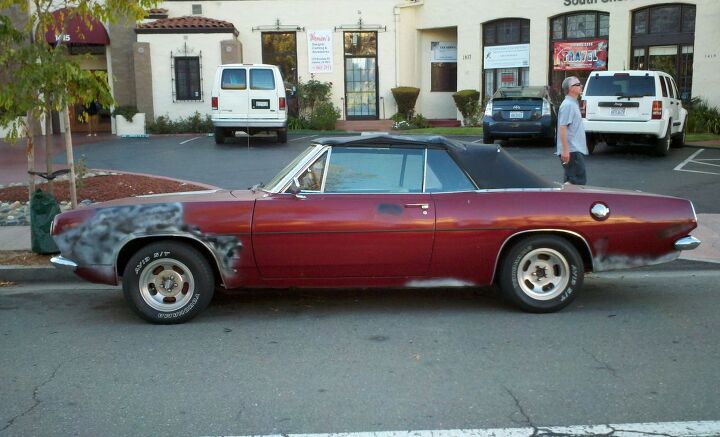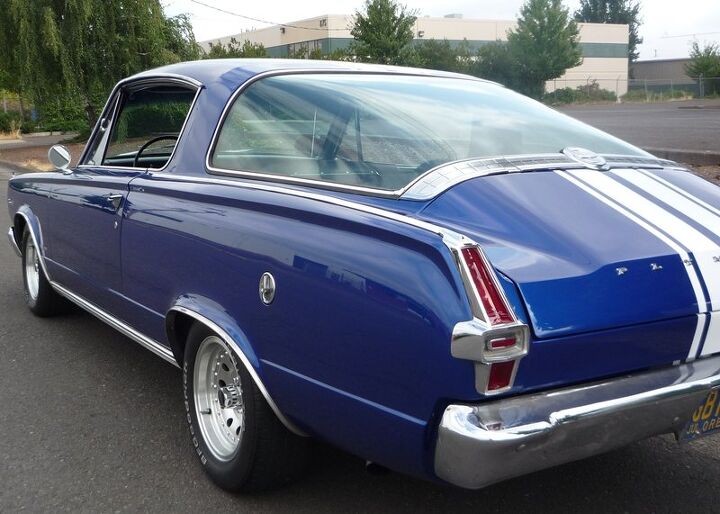#Barracuda
Chrysler Files Extension for Barracuda Name Many Times for Zero Cars
Folks over at Chrysler have filed another extension for the Barracuda nameplate, according to Allpar, which would be at least the fifth extension in three years with no new car in sight.
The filing over at the U.S. Patent and Trademark Office is wonderfully vague, specifying only “passenger automobiles, their structural parts, trim and badges” in the filing made June 23.
Reviving the Barracuda name would be incredibly difficult, considering it may not currently have a place to live.
How Hemi Magic Made It To The IPhone (And Its Competitors)
The chances are good that, as a TTAC reader, you use a smartphone. Among the literate, educated people who make up our reader base, ownership of a touch-screen phone with more computing power than a stack of DEC PDP-11s is the rule, not the exception. Google claims that over 250 million devices are running Android. Apple sold as many as 44 million iPhones in the past quarter. To some degree, the entire globe runs on these devices. Most of us couldn’t do our jobs or manage our lives without them.
The chances are not good that, as a TTAC reader, you own one of the two hundred and two 426 Hemi Super Stock “A990” Dodge Corornets and Plymouth Belvederes built. 93 TorqueFlite Dodges, 8 four-speed stick Dodges, 85 TorqueFlite Belvederes, 16 four-speeds. They were up to five hundred pounds lighter than their non-A990 brethren and were known to turn quarter-mile times in the high ten-second range with trap speeds between one-twenty-five and one-thirty. Modern supercars like the GT-R and Ferrari 458 can’t hang with a 1965 Plymouth Belvedere. Think about that.
Now think about the fact that, without those ’65 Mopars, your smartphone wouldn’t work quite the same way it does today.
Down On The Alameda Street: 1967 Plymouth Barracuda Convertible
Back when I lived in Alameda, California (also known as “The Island That Rust Forgot”), I photographed and posted nearly 600 interesting street-parked cars and trucks on Jalopnik. The first one was this Cadillac Cimarron d’Oro, back in May of ’07; the next 499 may be found here. I moved to Denver last year… which means the ITRF has had ample time to add many new DOTS candidates. I was on the island for a very brief time over the weekend and managed to shoot a couple of them.
Curbside Classic: 1966 Plymouth Barracuda
Pity the poor Barracuda. It beat the Mustang to market in 1964 by 16 days, but was utterly trounced by that seminal (and genre name-giving) pony car. In their first full year (1965), the Mustang outsold the ‘Cuda by 9 to 1. Well, despite that huge glassy fastback, it was hard to fool anyone that the Barracuda was anything other than a Valiant Signet with a fishbowl grafted on. That hardly made it an inferior car per se, and the fold down rear seat and resulting flat floor made it highly practical for certain uses. But the distinctive long-hood short-deck proportions of the Mustang instantly became iconic and a must-have; a glass-back Valiant just wasn’t going to do the trick, unless of course you found yourself in the right position to fully appreciate the Barracuda’s unique qualities.



















Recent Comments